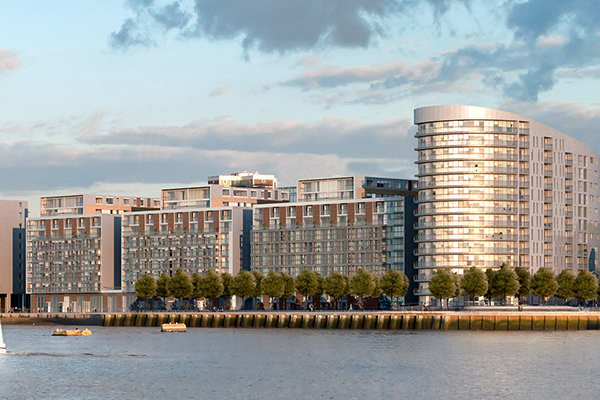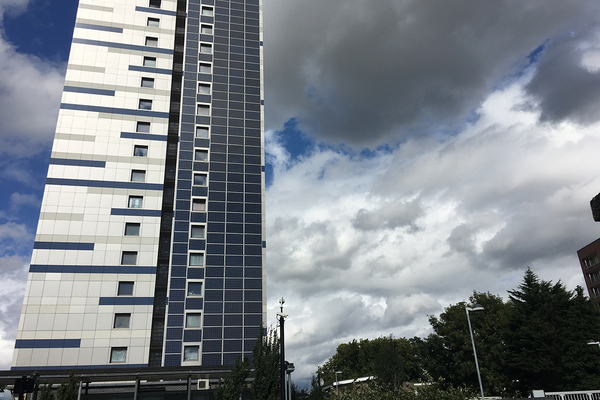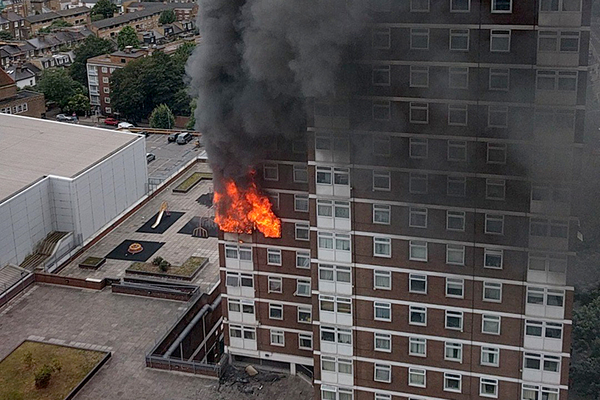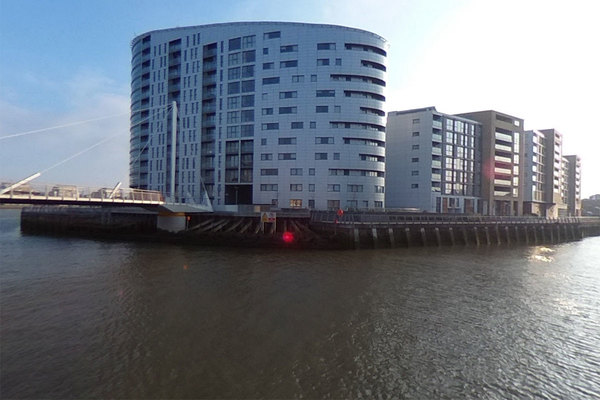Fire brigade tells residents it has ‘no power’ to force the removal of Grenfell-style cladding
The London Fire Brigade (LFB) has told residents of a block clad with a similar material to Grenfell Tower that it has “no power” to force the building owner to remove it.
In a letter sent to residents of New Capital Quay, in south-east London, the LFB said the Regulatory Reform (Fire Safety) Order does not give powers to “prescribe the particular works to be done to make a premises safe”.
This means that since developer Galliard Homes has put a ‘waking watch’ in place to check for fire, it cannot force them to take steps to remove the cladding.
The government has advised building owners to “seek professional advice” if they have a block clad in dangerous material, but has stopped short of ordering them to remove it.
The letter from the LFB said: “To be clear – the [Regulatory Reform Order] does not give enforcing authorities the right to prescribe the particular works to be done to make a building safe.
“The interim measures are sufficient so that the premises has no (unreasonable) life risk. This is what the interim measures were designed to do… An enforcement notice now is unlikely to be defendable if appealed.”
The letter also said that external wall cladding was not something within the scope of the Regulatory Reform Order, and therefore it did not expect to be consulted on them when a building was built or refurbished.
It said this was because cladding was not a feature of the building which is “used in common” by all the residents and “more accurately considered to be part of the wall of the individual flat”.
Chris Bright, a resident of the block, said: “There is a gaping chasm at the heart of building fire safety.
“The government should be looking at enforcement powers and encouraging fire authorities to take a robust view. It cannot be right that developers can throw up buildings with combustible cladding and there is no power to deal with that.”
According to the government’s latest statistics, 311 blocks have been identified with dangerous cladding, including 138 private sector blocks. This figure is however expected to rise substantially.
Update, at 21.6.2017 at 11.30am
Due to a typing error, this story originally said the letter "said that external wall cladding was something within the scope of the Regulatory Reform Order". It should have read "external wall cladding was not something within the scope of the Regulatory Reform Order".
We apologise for any confusion caused.
Never Again campaign
In the days following the Grenfell Tower fire on 14 June 2017, Inside Housing launched the Never Again campaign to call for immediate action to implement the learning from the Lakanal House fire, and a commitment to act – without delay – on learning from the Grenfell Tower tragedy as it becomes available.
One year on, we have extended the campaign asks in the light of information that has emerged since.
Here are our updated asks:
GOVERNMENT
- Act on the recommendations from Dame Judith Hackitt’s review of building regulations to tower blocks of 18m and higher. Commit to producing a timetable for implementation by autumn 2018, setting out how recommendations that don’t require legislative change can be taken forward without delay
- Follow through on commitments to fully ban combustible materials on high-rise buildings
- Unequivocally ban desktop studies
- Review recommendations and advice given to ministers after the Lakanal House fire and implement necessary changes
- Publish details of all tower blocks with dangerous cladding, insulation and/or external panels and commit to a timeline for remedial works. Provide necessary guidance to landlords to ensure that removal work can begin on all affected private and social residential blocks by the end of 2018. Complete quarterly follow-up checks to ensure that remedial work is completed to the required standard. Checks should not cease until all work is completed.
- Stand by the prime minister’s commitment to fully fund the removal of dangerous cladding
- Fund the retrofitting of sprinkler systems in all tower blocks across the UK (except where there are specific structural reasons not to do so)
- Explore options for requiring remedial works on affected private sector residential tower blocks
LOCAL GOVERNMENT
- Take immediate action to identify privately owned residential tower blocks so that cladding and external panels can be checked
LANDLORDS
- Publish details of the combinations of insulations and cladding materials for all high rise blocks
- Commit to ensuring that removal work begins on all blocks with dangerous materials by the end of 2018 upon receipt of guidance from government
- Publish current fire risk assessments for all high rise blocks (the Information Commissioner has required councils to publish and recommended that housing associations should do the same). Work with peers to share learning from assessments and improve and clarify the risk assessment model.
- Commit to renewing assessments annually and after major repair or cladding work is carried out. Ensure assessments consider the external features of blocks. Always use an appropriate, qualified expert to conduct assessments.
- Review and update evacuation policies and ‘stay put’ advice in the light of risk assessments, and communicate clearly to residents
- Adopt Dame Judith Hackitt’s recommended approach for listening to and addressing tenants’ concerns, with immediate effect
CURRENT SIGNATORIES:
- Chartered Institute of Housing
- G15
- National Federation of ALMOs
- National Housing Federation
- Placeshapers














